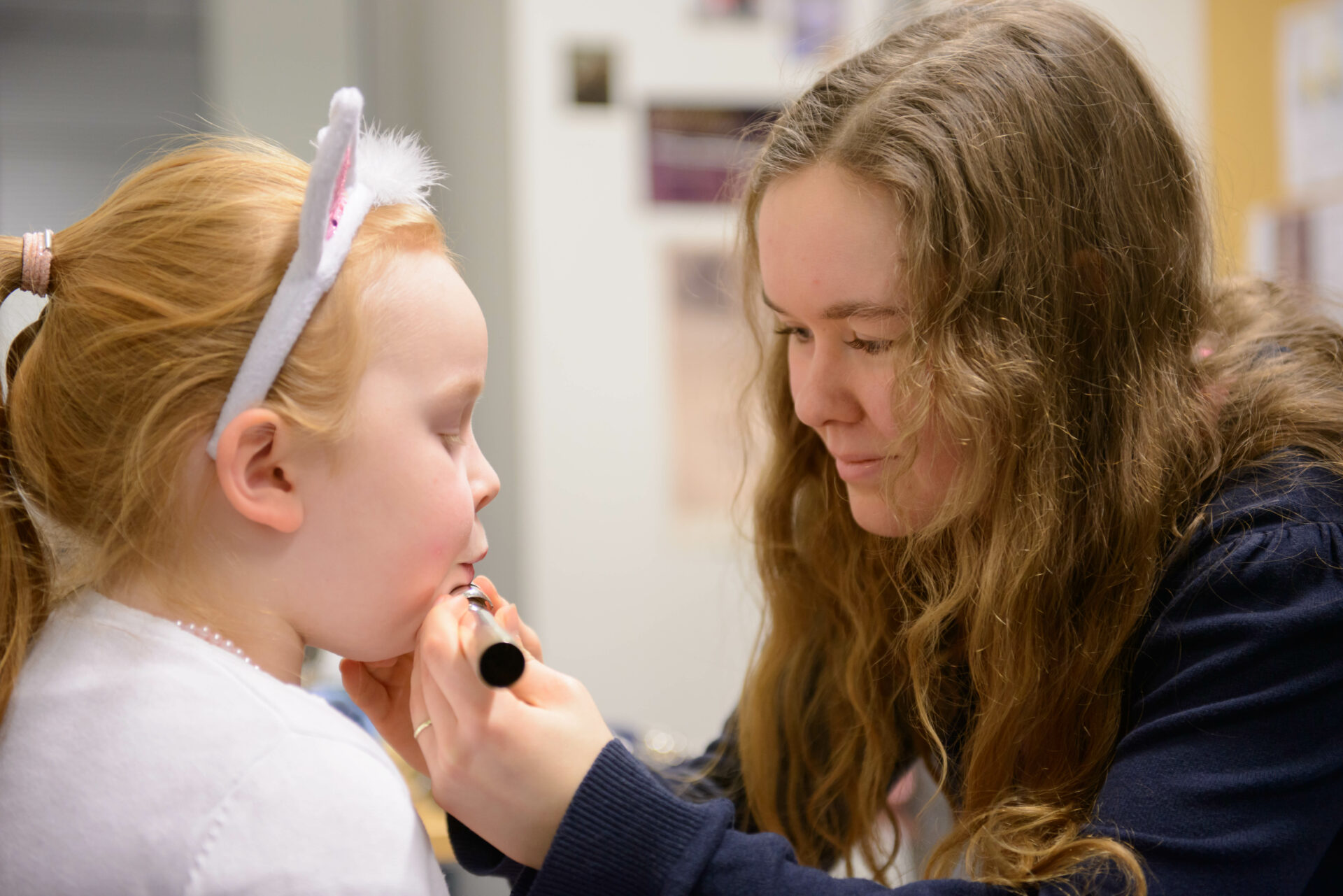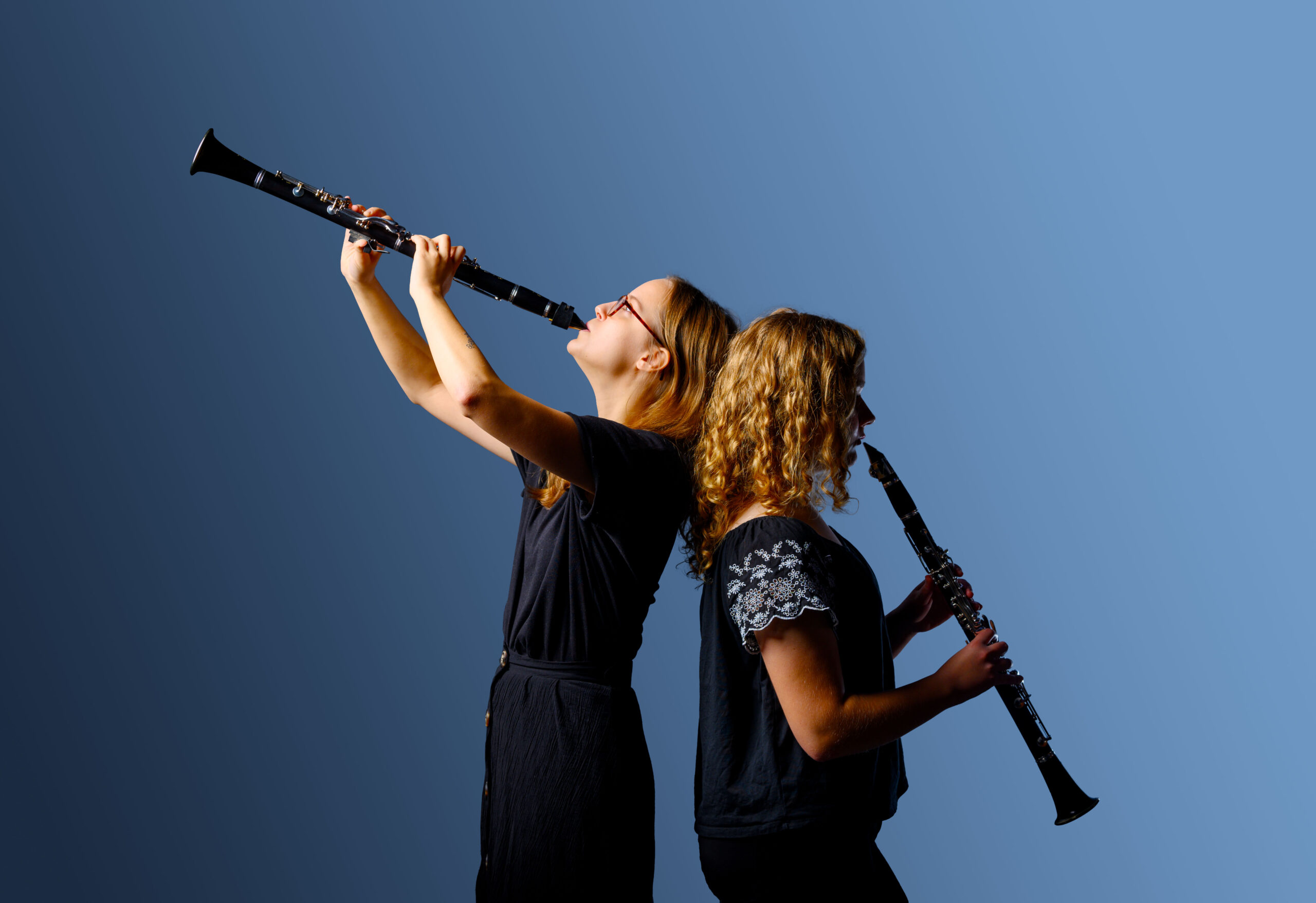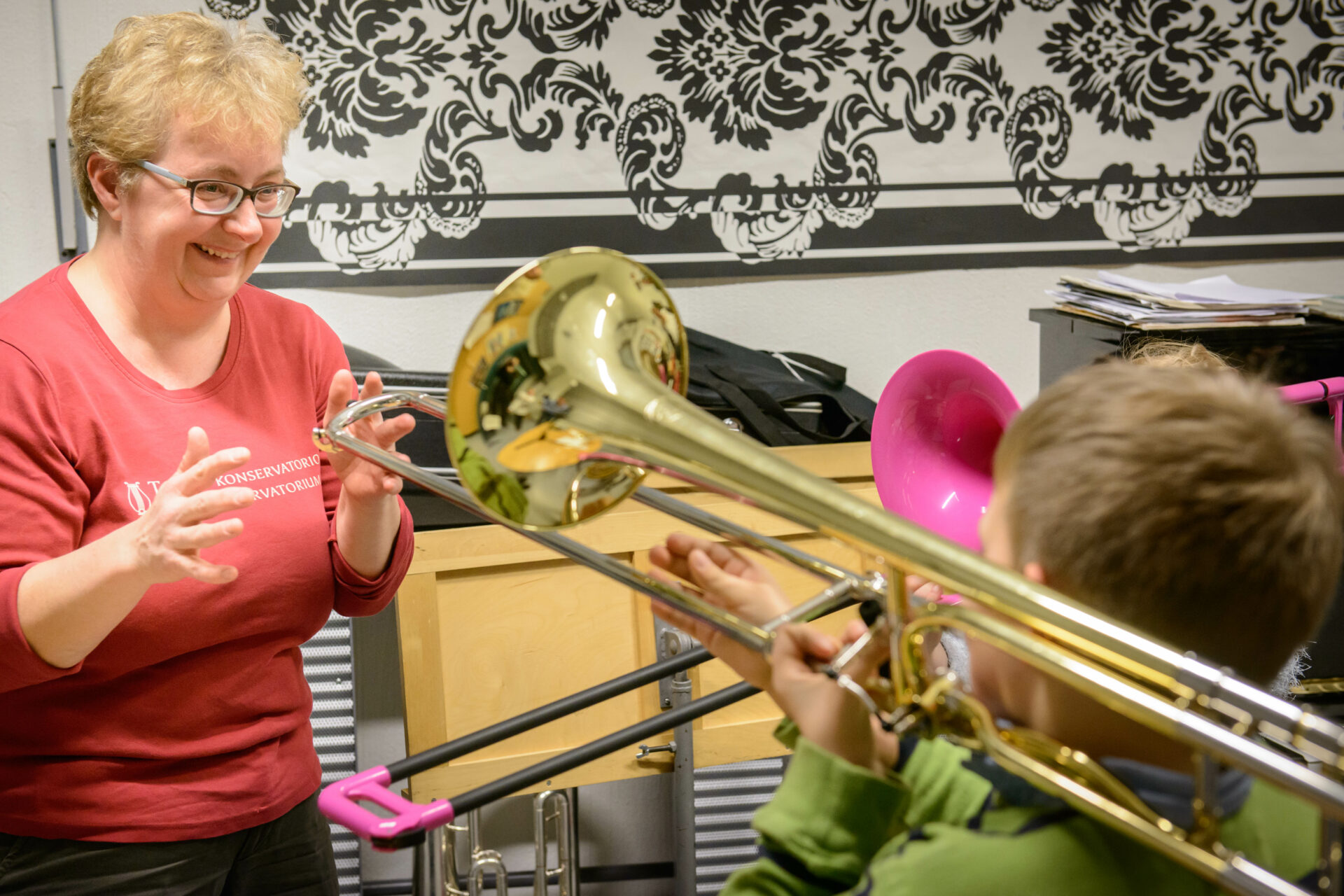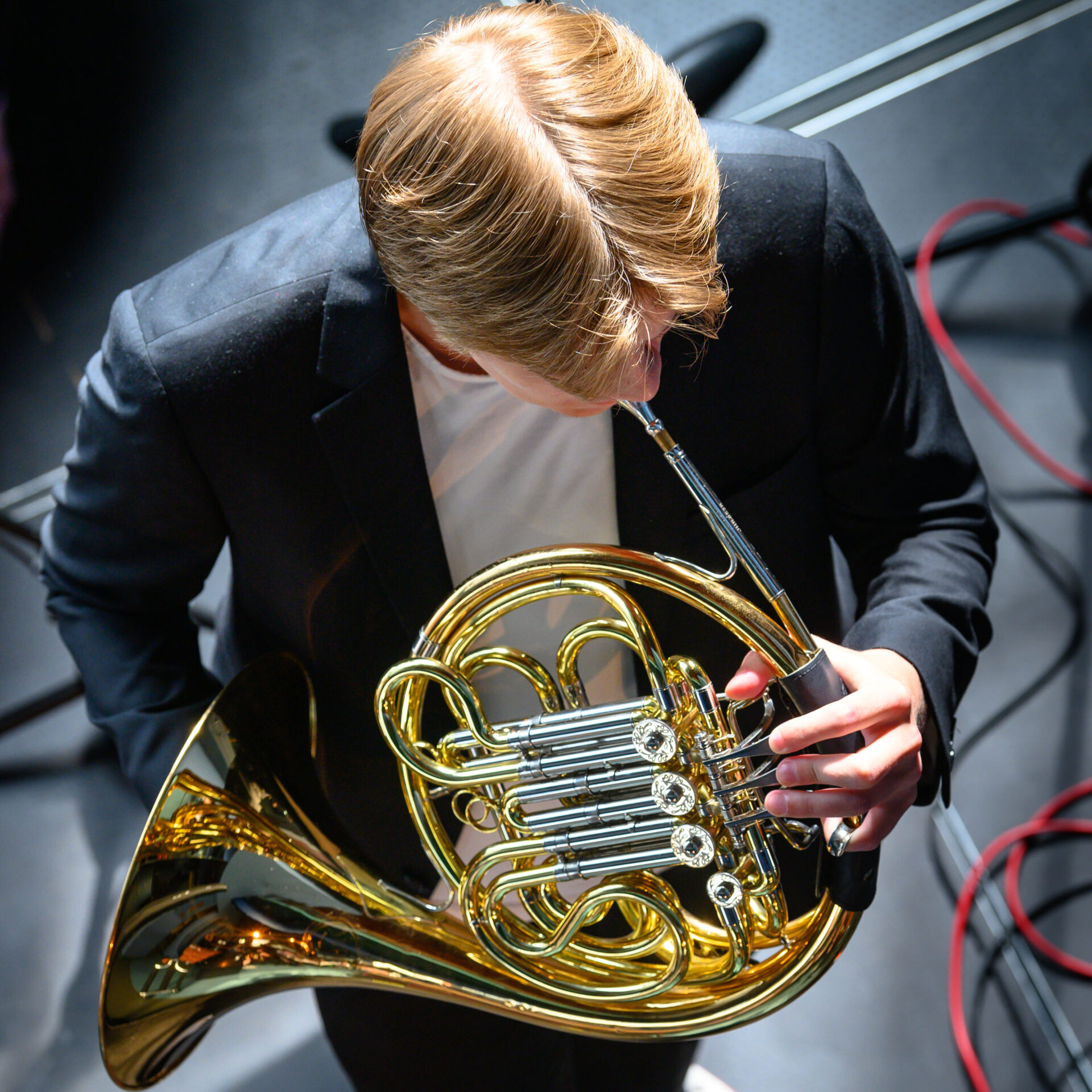Wind instruments
We offer training in wind music in both woodwind and brass instruments. Goal-oriented training can begin with different wind instruments even when a little bit older, such as at the age of 15.
Playing music together is an essential part of practice and performing with wind instruments. The social nature the hobby, new friends and the joy of playing together encourage many to continue playing throughout their lives.
Our instrument teachers are happy to provide more information about different wind instruments, their features and how and when to start playing them as a hobby. Turku Conservatory can either lend or lease many of the instruments. Our threshold for playing is low and our spirits high!
Woodwind instruments
You can study the following woodwind instruments at Turku Conservatory:
- Recorder (starting age around 6 years)
- Flute (starting age around 9 years)
- Clarinet (starting age around 8 years)
- Oboe (starting age around 10 years)
- Bassoon (starting age around 8 years)
- Saxophone (starting age around 10 years)
The age range for to start playing a woodwind instrument is very extensive, so the learners can be older than presented above. With some of the instruments, it is actually beneficial.
Flute
The flute is a versatile instrument for which we have an inexhaustible number of notes from pop to classical and Baroque to jazz.
A suitable age to start playing the flute is at the age of nine, at which point a Western concert flute is the instrument. Children aged 7–8 years can first use a curved head joint with the flute, so that playing is less straining on their hands as they begin learning. When their arms grow, the flute’s mouthpiece is replaced with a straight one and the instrument will be in full size.
No previous experience of playing music or musical theory is needed to start playing as a hobby. All you need is your own instrument and enthusiasm. Our teachers are happy to help students choose the flute that best suits them.

Recorder
The recorder is an old artistic instrument, and a relatively light wind instrument that fits even a small player. There are recorders of many sizes. You can start playing with a soprano recorder at the age of approximately six. As the child’s fingers grow, they can expand the range of instruments with alto, tenor and bass recorders.
Recorders are made from wood, but you can start playing with an affordable plastic recorder. Nowadays, you can play all kinds of music with a recorder: old and new, classical and light, alone and together. It is an equal instrument alongside all other instruments.
Learning to play the recorder is useful if the student later wants to switch to another woodwind instrument.
Further information on flute and recorder:
Clarinet
The clarinet is an easy instrument, as you can easily produce a soft and beautiful sound without a lot of effort. The tone of the clarinet is one of the most extensive among wind instruments. The sound of a clarinet is also a perfect fit for those who live in a block of flats.
The suitable age to start playing the clarinet is around eight years old and up. Many famous clarinet artists have only started playing after the age of 15, so you can easily join the world of clarinets even when you are older.
When starting at a younger age, it would be preferable that the baby teeth incisors have already changed to the permanent ones. You can easily blow into the clarinet, and no great physical force is required to produce sound.
The clarinet is also light and compact in size and weight. A small student may first experience minor difficulties in reaching the lowest keys with their fingers. You can start using more lower keys depending on the situation.
Clarinets are affordable. The cheapest models that are suitable for students are around 400 euros, but if you invest a bit more, you can get a significantly better woodwind instrument for about 800 euros. A clearly high-quality model for long-term studying costs around 1,300 euros with its silver-plated and high-quality keywork.
Video shows Super Mario music.
Further information on clarinet:

Oboe
Oboe looks like the clarinet and is about the same size, but its mouthpiece and the sound are different. It belongs to double reed instruments (the mouthpiece has two reeds tied against each other) and is related to bassoon and bagpipes, for example.
You can hear the oboe’s soulful sound in many film scores, and the oboe gives the tuning note at the beginning of a symphony orchestra’s concert. People normally start to play this instrument at the age of 10 or older, once their fingers can reach the keys and the player is able to blow briskly. You can start younger too, as long as the child has their permanent incisors.
Oboe is quite a rare instrument, so those who can play it are in demand for orchestras and bands. The instrument case fits in a backpack, making it easy to carry around. New, beginner-level oboes cost over 1,000 euros. You can also start by renting the Conservatory’s instrument.
Further information on oboe
Further information on saxophone
Bassoon
Information about bassoon is published shorty.
Brass instruments
You can study the following brass instruments at Turku Conservatory:
- Tuba
- Cornet
- Trumpet
- French horn
- Trombone
- Baritone horn (euphonium)
Further information on brass instruments:

Trumpet
You can admire the gorgeous and clear sound of the trumpet both in a symphony orchestra and in movie and pop/jazz music. This instrument is suitable for all types of music. In addition to the blowing technique, there are three valves for changing the sound of the trumpet.
You can start instrument training already at the age of 6–7, in which case a pocket trumpet or a cornet would be better suited to the small player’s hands in the beginning. Starting at an older age is not a problem with this or other brass instruments, as 10–15-year-olds usually learn to play brass instruments quickly. Those who already have some experience with another instrument are particularly quick to catch on.
You can join an orchestra already at the beginning of the musical journey, as our educational institution has four orchestras at different levels. Communal hobbies are the best part of playing wind instruments, and orchestras introduce you new friends that help form a social network. Wind instrument players do not have to wait for their turn on the bench, as they play from start to finish.
You can also play a trumpet or other brass instruments in a block of flats within the limits permitted by the housing company’s rules. Different mutes not only change the tone of the sound, but also reduce the volume.
The educational institution leases instruments to beginners. Trumpets for student-level players cost around 500 euros and up, and the price range of professional trumpets is around 2,500–5,000 euros.
Trombone
The trombone is a versatile instrument, and you can use it to play everything from the Ride of the Valkyries to jazz ballads.
Unlike other brass instruments, the trombone has a sliding part instead of valves. In addition to blowing, the slide can be used to alter the pitch, which is naturally also used to make people laugh.
The ideal starting age is 7 years and up to retirement age. You can easily rent the instrument from the Conservatory and later purchase your own one.
Once you start to understand how to play the trombone, you can play together with others, as the Conservatory has orchestras for players at different stages of learning. We must warn you though… Playing in an orchestra may captivate you for the rest of your life.
French horn
The French horn is twisted like spaghetti. Despite its many curves, the horn’s sound is gallant and velvety. You can play many types of music with the French horn, from classical to cinematic music and rock. As soon as you get the hang of your hobby, you can start playing solo. Depending on the size of the French horn, you can start playing it at the age of 6–7 years. The instrument has such a soft sound that it is well suited for playing music also in a block of flats or a terraced house.
The French horn is also an orchestra instrument that is played in symphony orchestras, wind instrument orchestras and other assemblies. A group of French horns sounds fantastic, with two players or a larger group alike.
There are different sizes of French horns. Depending on their size, children start with smaller horns. When you grow older and more skilful, you can change to a bigger one. You can borrow the instrument from the Conservatory, but small French horns cost around 400–1500 euros. The prices of larger horns usually start at approximately 3,000 euros.

Baritone horn
This smooth-sounding instrument that looks like the tuba is also known as the euphonium. In an orchestra of wind instruments, its task is often to carry the beautiful melodies and provide rhythmic elements that support the bass line. It is smaller than the tuba and has a higher sound. You can start playing it (or its relative the tenor horn) even as young as at the age of six, and it is considered an easy starter instrument. You can rent the instrument from the educational institution at the beginning of your instrument training.
Tuba
The tuba has the lowest pitch in the brass instrument family. The tuba’s sound is soft and round, and it supports the sounds of the entire orchestra in both wind and symphony orchestras. The instrument is quite large, and a younger child who wants to play the tuba can start first by playing a tenor or baritone horn, gradually moving to the tuba. You can rent the instrument from the educational institution.